
Find Help
More Items From Ergsy search
-

Why is there a call for greater transparency in banking fees?
Relevance: 100%
-

What initiatives are in place to address banking fee transparency?
Relevance: 96%
-

How can banks improve transparency regarding their fees?
Relevance: 96%
-

Calls for Greater Transparency in Banking Fees as Complaints Rise
Relevance: 95%
-

How can government policies influence transparency in banking fees?
Relevance: 94%
-

How does technology help in enhancing transparency in banking fees?
Relevance: 93%
-
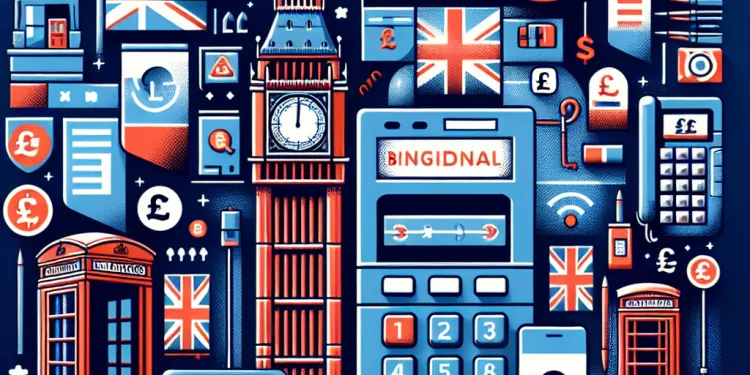
What actions are consumer rights groups taking regarding banking fee transparency?
Relevance: 87%
-

What feedback do customers give regarding banking fees?
Relevance: 72%
-

What role do regulatory bodies play in fee transparency?
Relevance: 72%
-

How do banking fees impact financial inclusion?
Relevance: 72%
-

What are the consequences for banks not complying with transparency standards?
Relevance: 72%
-

Are there specific banking services more prone to opaque fee structures?
Relevance: 69%
-

Do online banks have lower fees than traditional banks?
Relevance: 67%
-

Do all banks have the same fee structures?
Relevance: 67%
-

Can customers dispute unexpected banking fees?
Relevance: 66%
-
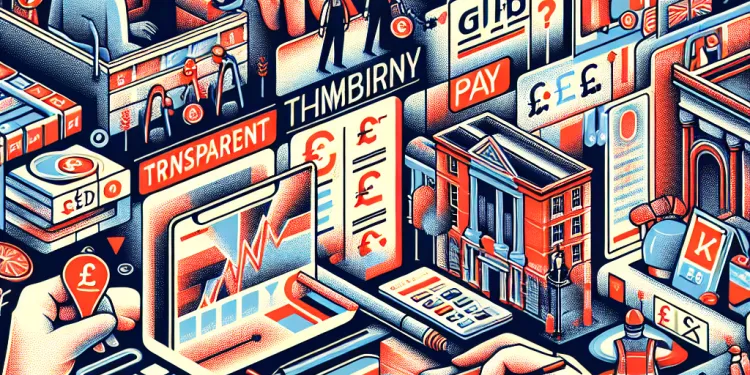
Do gig workers have the right to transparency in pay and fees?
Relevance: 66%
-

Why are some banking fees unexpectedly high?
Relevance: 64%
-

What role do customer service representatives play in fee transparency?
Relevance: 63%
-

How can disputes over banking fees be resolved effectively?
Relevance: 58%
-

What are some examples of hidden fees in banking?
Relevance: 58%
-

How can consumers protect themselves from hidden banking fees?
Relevance: 57%
-

Are there any hidden fees with Monzo or Revolut?
Relevance: 52%
-

Can I use Monzo or Revolut for everyday banking?
Relevance: 47%
-

Are there any fees to claim money back?
Relevance: 45%
-

Is it easy to switch banks to Monzo or Revolut?
Relevance: 39%
-
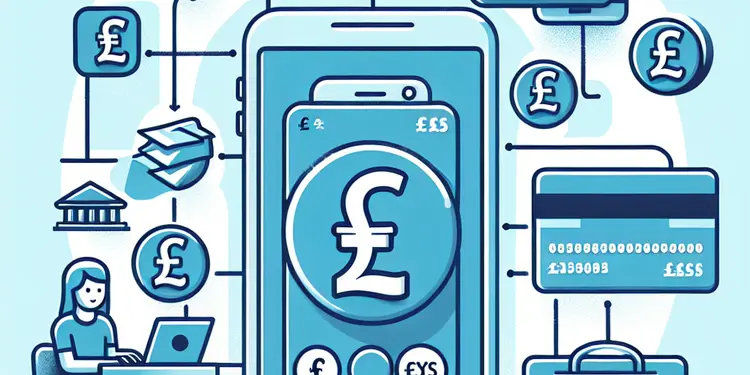
Will students receive the payment directly into their bank accounts?
Relevance: 39%
-

Is advice from my bank on pensions reliable?
Relevance: 39%
-

How important is financial transparency in preventing disputes?
Relevance: 38%
-
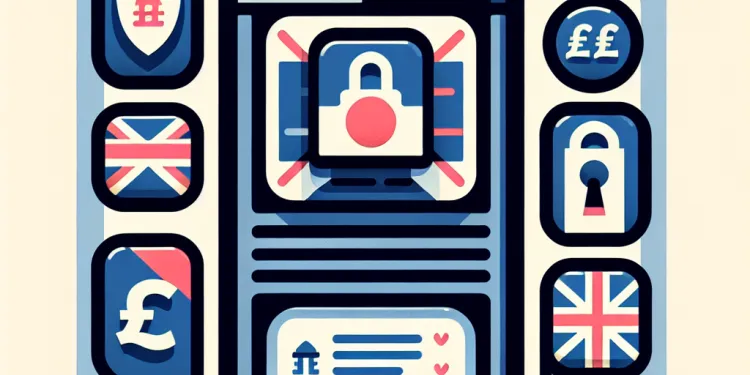
Are online banks like Monzo and Revolut safe?
Relevance: 38%
-

Is there a cost to receive food from a food bank?
Relevance: 37%
-

What types of fees are customers most concerned about?
Relevance: 37%
-

Are there any fees associated with balance transfers?
Relevance: 37%
-

Do online banks offer investment options?
Relevance: 37%
-

How transparent are water companies regarding infrastructure improvements?
Relevance: 36%
-

Is there a fee to bring a case to the tribunal?
Relevance: 36%
-

Are there fees associated with Stocks & Shares ISAs?
Relevance: 36%
-

What is a food bank?
Relevance: 35%
-
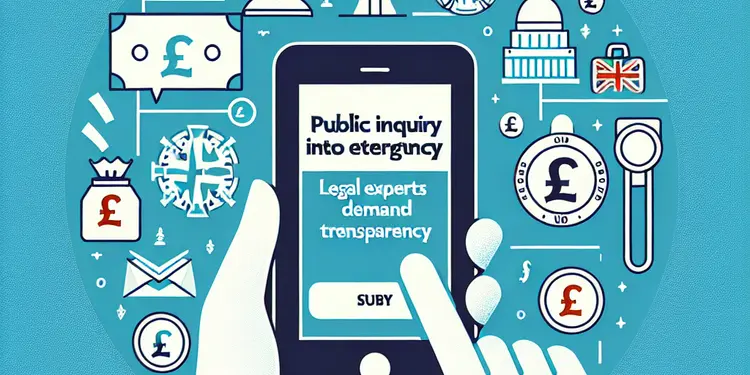
Public Inquiry into States of Emergency: Legal Experts Demand Transparency
Relevance: 34%
-

Are banks required to disclose all fees?
Relevance: 34%
-

Are food banks open on weekends?
Relevance: 33%
Introduction
Banks in the UK face ongoing pressure to improve transparency concerning their fee structures. Transparency is essential for building trust with customers, ensuring informed financial decisions, and adhering to regulatory standards. As banking evolves with technology, so too must the clarity with which banks communicate fees. This can be achieved through clear communication, technology, and proactive engagement with customers.
Clear and Simple Communication
One of the most effective ways banks can improve fee transparency is by using clear and simple language when describing fees. Avoiding jargon and instead opting for straightforward explanations helps customers understand what they are being charged for. Banks should provide examples of common transactions and the associated fees, enabling customers to see exactly what costs they might incur.
Standardised Fee Schedules
Standardising the presentation of fees across all banks can significantly improve transparency. By using a consistent format and terminology, consumers can easily compare fees between different banks. This strategy also aligns with efforts by regulatory bodies such as the Financial Conduct Authority (FCA) to promote fair competition and consumer protection in the banking sector.
Utilising Technology
Leveraging technology can enhance transparency by making fee information more accessible. Banks can develop mobile apps and online platforms where customers can view detailed breakdowns of their fees. Interactive tools that allow customers to simulate different scenarios to see potential fees in real-time can also be beneficial. Additionally, sending notifications via email or SMS can keep customers informed about changes in fee structures or upcoming charges.
Proactive Customer Engagement
Actively engaging with customers about fees before they incur them is crucial. Banks should provide regular updates and reminders about fee structures, and offer personal financial advice when needed. Hosting workshops and webinars to educate customers on managing fees can build trust and loyalty. Customer feedback mechanisms, such as surveys and feedback forms, can help banks understand how their fee transparency efforts are perceived and where improvements are needed.
Regulatory Compliance and Audits
Compliance with regulations is essential for maintaining transparency. The FCA mandates that any changes in fee structures must be communicated to customers in a timely manner. Regular audits can ensure that banks adhere to these standards and identify any areas for improvement. By consistently aligning with regulatory expectations, banks can enhance their reputation and customer trust.
Conclusion
In summary, enhancing transparency around banking fees in the UK requires a multifaceted approach involving clear communication, standardised fee schedules, technology utilisation, proactive customer engagement, and adherence to regulations. Implementing these strategies will not only improve customer satisfaction but also foster trust and loyalty in the long term.
Introduction
Banks in the UK need to be clear about their fees. It is important for banks to tell people how much things cost. This helps people trust banks and make good choices with their money. Banks should use simple words and technology to talk about fees clearly.
Clear and Simple Communication
Banks should use easy words when they talk about fees. This way, people can understand what they are paying for. Banks should give examples of things customers might do and show how much they cost. This helps people know what they might have to pay.
Standardised Fee Schedules
All banks should show their fees in the same way. This makes it easy for people to compare fees from different banks. The Financial Conduct Authority (FCA) wants banks to do this so it's fair and customers know they are protected.
Utilising Technology
Banks can use technology to help people see their fees. They can create apps and websites where customers can check their fees easily. Apps could let people try out different choices to see how much something would cost before they do it. Banks can also send messages or emails to tell customers about changes in fees.
Proactive Customer Engagement
Banks should talk to customers about fees before they happen. They can send reminders and give advice about managing money. Banks can hold classes or online talks to teach people about fees. They can also ask customers for feedback to learn what they can do better.
Regulatory Compliance and Audits
Banks must follow rules about fees. The FCA says banks must tell people quickly about any changes in fees. Banks check often to make sure they follow these rules. By doing this, banks keep their customers' trust.
Conclusion
To sum up, banks in the UK need to be clear about their fees. This can be done by using simple words, showing fees the same way, using technology, talking to customers, and following the rules. Doing these things will help customers trust and stay happy with their banks.
Frequently Asked Questions
What measures can banks take to make their fee structures clearer to customers?
Banks can use straightforward language, provide detailed explanations on fee statements, and avoid using jargon. They can also ensure information is accessible both online and in physical branches.
How can banks use digital tools to enhance fee transparency?
Banks can create interactive digital tools, such as fee calculators and personalized dashboards, to help customers understand potential fees and track their accounts in real-time.
What role do customer service representatives have in improving fee transparency?
Customer service representatives should be well-trained to explain fee structures clearly and answer any questions customers might have about potential charges.
How often should banks update their fee schedules to maintain transparency?
Banks should review and update their fee schedules regularly, at least annually or whenever significant changes occur, to ensure accuracy and transparency.
How can banks ensure that fee disclosures are easily accessible to all customers?
Banks should provide fee information in multiple formats, such as online, via mobile apps, and printed brochures, ensuring it is accessible to all customers, including those with disabilities.
What strategies can banks use to educate customers about their fees?
Banks can hold workshops, webinars, and one-on-one consultations to educate customers about fees. They can also provide educational content through their websites and newsletters.
Can banks use comparison charts to improve fee transparency?
Yes, banks can create simple comparison charts that illustrate different account options and associated fees, helping customers make informed decisions.
How can banks address customer feedback regarding unclear fees?
Banks should establish channels for customer feedback and regularly review this input to identify areas where fee explanations can be improved, adapting their policies accordingly.
Should banks involve regulatory bodies to ensure their fee transparency?
Yes, banks should work closely with regulatory bodies to ensure their fee disclosures meet compliance standards and incorporate best practices for transparency.
What are the benefits of transparent fee structures for banks?
Transparent fee structures can build trust with customers, reduce the likelihood of disputes, and enhance customer satisfaction and loyalty.
How can banks make fee notifications more effective?
Banks can send timely alerts and reminders regarding fees via email, SMS, or push notifications, ensuring customers are aware of upcoming charges.
Can simplifying fee structures enhance transparency?
Yes, simplifying fee structures can help customers understand charges better and reduce confusion, contributing to overall transparency.
How can banks leverage customer surveys to improve fee transparency?
Banks can use surveys to gather customer insights on fee clarity, using the feedback to refine their communication strategies and address any confusion.
What examples of clear fee disclosure can banks follow?
Banks can look at best practices from industry leaders who use simple language, provide examples, and use visuals in their fee disclosures.
How can banks involve customers in the process of enhancing fee transparency?
Banks can establish advisory panels consisting of diverse customer representatives to receive direct feedback on fee-related communications and disclosures.
In what ways can banks ensure non-English speaking customers understand fee structures?
Offering fee information in multiple languages and providing bilingual customer service options can help non-English speaking customers understand fee structures better.
How can banks ensure that all aspects of fees are transparent?
Banks should cover all types of fees, including hidden and conditional ones, in their disclosures, ensuring no charges are omitted or ambiguous.
What role does design play in transparent fee disclosure?
Good design can make fee disclosures more readable and engaging, using techniques like bullet points, headers, and infographics to highlight important information.
How can banks evaluate the effectiveness of their fee transparency efforts?
Banks can monitor customer feedback, complaint levels, and conduct regular audits to assess how well their transparency measures are working.
Why should banks prioritize transparency in their fee disclosures?
Prioritizing transparency can prevent misunderstandings, minimize conflict, and enhance the customer experience, leading to long-term trust and loyalty.
How can banks make their fees easier for people to understand?
Banks can use simple words. They can explain fees with pictures and charts.
Banks can give examples. This will help people see what fees might cost.
Banks can create a helpline. People can call to ask questions about fees.
Banks can use videos to explain fees. Videos can make learning about fees fun and easy.
Banks can give printed guides to customers. The guides can use big text and short sentences.
These tools can help everyone understand bank fees better.
Banks can use simple words. They should explain fees clearly. They should not use tricky words. They should give information both on the internet and in bank buildings.
How can banks use digital tools to show fees clearly?
Banks can use computers and the internet to help people see fees better.
Here are some ways they can do it:
- Make easy-to-read websites and apps.
- Send clear messages about fees.
- Use pictures and videos to explain fees.
- Offer help like chat or customer support.
Banks can make helpful online tools. These tools, like fee calculators and personal dashboards, help people see and understand fees. They also help people watch their accounts live.
How can customer service people help make fees clearer?
Customer service workers need to be good at telling people about costs. They should also answer any questions people have about charges.
How often should banks change their list of fees to keep it clear?
Banks have a list of fees they charge for their services. It is important for banks to keep this list easy to understand so customers know what they are paying for.
Banks should change their list of fees every year. This helps people to see the fees clearly and understand them.
You can use different tools to help understand the fees:
- Ask a bank worker to explain the fees to you.
- Look for online guides or videos that help explain bank fees.
- Use apps that explain money and bank charges in simple ways.
Remember, it is okay to ask questions if you do not understand the fees. Banks should make things clear for everyone.
Banks should check and update their list of fees often. They should do this at least once a year or whenever big changes happen. This helps make sure everything is correct and clear for everyone.
How can banks make fee information easy for everyone to find?
Banks should give out fee information in different ways. They can show it online, in mobile apps, and in paper brochures. This helps everyone see it, even people with disabilities.
How can banks help people understand their fees?
Banks can use simple words and short sentences to explain their fees.
Banks can make easy-to-read guides or videos about their fees.
Using pictures or icons can help people learn about fees.
Banks can have friendly staff to answer questions.
Using online tools like calculators can help people see and understand fees.
Banks can help people learn about fees. They can have workshops, online talks, and meetings to explain things. Banks can also share helpful information on their websites and send out newsletters.
Can banks use charts to show fees clearly?
Banks can use simple charts to show fees. This helps people see what costs are. It is like a picture that shows which fees are big or small.
Using charts is a good way to make things clear.
Here are some tips to help understand charts:
- Look at each part of the chart one by one.
- Ask someone if you don't understand a part.
- Use a ruler or your finger to follow the lines.
Banks can make simple charts. These charts show different bank accounts and their costs. This helps people choose the best account for them.
How can banks fix customer complaints about confusing fees?
Banks can help customers who find fees confusing by doing these things:
- Use simple words to explain the fees.
- Show a clear list of all fees.
- Have friendly staff to answer questions.
- Offer easy-to-read leaflets or videos about fees.
- Use tools like apps to help customers see and understand their fees better.
Banks should have ways for customers to share their thoughts. They need to look at these thoughts often to see how they can make fee explanations better. Banks should change their rules if needed.
Should banks ask others to help make their fees clear?
Banks charge fees for some services. Should they ask special groups to help make these fees easy to understand?
Here are some ideas to help:
- Use pictures or charts to show fees.
- Use simple words and short sentences.
- Offer videos that explain the fees step-by-step.
These tools can help everyone understand bank fees better.
Banks should work with people who make rules to make sure they are clear about the fees they charge. This helps everyone understand what they need to pay.
Some tools that might help include using simple words and pictures to explain fees. It's also good to ask someone to double-check if the information is easy to understand.
Why is it good for banks to show clear fees?
Banks showing clear fees is helpful. Here are some reasons why:
- Easy to understand: Clear fees help people know what they are paying for.
- No surprises: People can avoid unexpected costs when fees are clear.
- Better choices: Knowing the fees helps people pick the right bank for them.
Tools that help understand fees include:
- Fee calculators: These help people see how much they will pay.
- Bank advisors: They can explain how fees work.
When we show people how much things cost, they trust us more. It also means less arguing about money and makes people happy. This helps them want to come back and use our services again.
How can banks do a better job of telling people about fees?
Banks charge extra money called "fees" for some services. It's important for banks to tell people about these fees in a way that's easy to understand.
Here are some ways banks can do this:
- Use simple words and short sentences.
- Make letters and messages clear and easy to read.
- Add pictures or symbols to help explain the message.
- Use videos to show examples and explain fees better.
Tools that can help people understand messages better:
- Read the message out loud using apps.
- Use screen readers if you need help seeing the text.
Banks can send quick messages to remind you about fees. They can do this through email, text messages, or app alerts. This way, you know when charges are coming up.
Can making fees simple help people understand better?
Yes, making fees easier to understand helps people know what they are paying for. This stops confusion and helps everyone be clear.
How can banks use surveys to make fees clearer for customers?
Banks can ask customers questions to find out what they think. This helps banks understand what people like or do not like about fees.
Banks can use this information to explain fees better. They can make it easier for customers to see and understand the costs they might pay.
Here are some tools that can help:
- Clear language: Use simple words to explain fees.
- Easy charts: Show fees using pictures or charts.
- Feedback forms: Let customers say what they think about fees.
These can help customers know what they are paying for.
Banks can ask customers questions to find out what they think about fees. Then, they can use these answers to make their messages clearer. This helps fix any misunderstandings.
How can banks show their fees clearly?
Banks can learn from the best. They can use simple words, show examples, and add pictures when explaining fees. This makes it easier for everyone to understand.
How can banks work with customers to make fees clearer?
Banks can set up groups with different types of customers. These groups help banks get advice and ideas on how they talk about fees.
How can banks help people who don't speak English understand fees?
Banks can use clear and simple language to explain fees. They can use pictures and symbols too.
Banks can provide translators to help explain fees.
Banks can also offer papers and forms in different languages.
People can ask a friend or family member to help understand the fees.
It helps people who do not speak English to know about fees if you share the information in different languages. You can also have customer service staff who speak more than one language to help them understand better.
How can banks make sure everyone understands fees clearly?
Banks can help people understand fees by using simple words and clear explanations. They can also:
- Show all fees in one easy-to-read list.
- Use pictures or charts to explain fees.
- Offer help from a person who can explain fees.
- Provide a website with more information in simple language.
Tools like videos or apps that explain things step-by-step can also help.
Banks must tell you about all the fees. This means any type of fee, even the ones you don't see right away or only pay sometimes. Banks need to make sure they don’t leave any fees out. They should make everything clear so it’s easy to understand.
If you find reading hard, try using tools like audiobooks or asking someone to explain it to you.
How does design help people see fees clearly?
Good design helps people understand fee information better. It uses tools like bullet points, titles, and pictures to show the important details.
How do banks check if people understand their fees?
Banks can watch what customers say, check how many complaints they get, and do regular checks to see if they are being clear and honest with people.
Some tools and techniques that might help are:
- Simple surveys to ask customers about their experiences.
- Regular meetings to go over feedback and find out what is going well or needs fixing.
- Using clear and easy-to-understand language in all their communication.
Why should banks be clear about their fees?
Banks should tell people clearly about any costs they have to pay. This is called being transparent.
Here are some reasons why being clear is important:
- People know what they are paying for.
- It makes it easier to trust the bank.
- People can make better choices with their money.
If you are finding it hard to read, try using a ruler or your finger to follow the words. You can also ask someone to read with you. Some people like using apps that can read text out loud.
Being open and honest helps people understand each other better. It stops fights and makes customers happy. This helps build trust and keeps customers coming back.
Useful Links
- Ergsy carfully checks the information in the videos we provide here.
- Videos shown by Youtube after a video has completed, have NOT been reviewed by ERGSY.
- To view, click the arrow in centre of video.
- Most of the videos you find here will have subtitles and/or closed captions available.
- You may need to turn these on, and choose your preferred language.
- Go to the video you'd like to watch.
- If closed captions (CC) are available, settings will be visible on the bottom right of the video player.
- To turn on Captions, click settings .
- To turn off Captions, click settings again.
More Items From Ergsy search
-

Why is there a call for greater transparency in banking fees?
Relevance: 100%
-

What initiatives are in place to address banking fee transparency?
Relevance: 96%
-

How can banks improve transparency regarding their fees?
Relevance: 96%
-

Calls for Greater Transparency in Banking Fees as Complaints Rise
Relevance: 95%
-

How can government policies influence transparency in banking fees?
Relevance: 94%
-

How does technology help in enhancing transparency in banking fees?
Relevance: 93%
-

What actions are consumer rights groups taking regarding banking fee transparency?
Relevance: 87%
-

What feedback do customers give regarding banking fees?
Relevance: 72%
-

What role do regulatory bodies play in fee transparency?
Relevance: 72%
-

How do banking fees impact financial inclusion?
Relevance: 72%
-

What are the consequences for banks not complying with transparency standards?
Relevance: 72%
-

Are there specific banking services more prone to opaque fee structures?
Relevance: 69%
-

Do online banks have lower fees than traditional banks?
Relevance: 67%
-

Do all banks have the same fee structures?
Relevance: 67%
-

Can customers dispute unexpected banking fees?
Relevance: 66%
-

Do gig workers have the right to transparency in pay and fees?
Relevance: 66%
-

Why are some banking fees unexpectedly high?
Relevance: 64%
-

What role do customer service representatives play in fee transparency?
Relevance: 63%
-

How can disputes over banking fees be resolved effectively?
Relevance: 58%
-

What are some examples of hidden fees in banking?
Relevance: 58%
-

How can consumers protect themselves from hidden banking fees?
Relevance: 57%
-

Are there any hidden fees with Monzo or Revolut?
Relevance: 52%
-

Can I use Monzo or Revolut for everyday banking?
Relevance: 47%
-

Are there any fees to claim money back?
Relevance: 45%
-

Is it easy to switch banks to Monzo or Revolut?
Relevance: 39%
-

Will students receive the payment directly into their bank accounts?
Relevance: 39%
-

Is advice from my bank on pensions reliable?
Relevance: 39%
-

How important is financial transparency in preventing disputes?
Relevance: 38%
-

Are online banks like Monzo and Revolut safe?
Relevance: 38%
-

Is there a cost to receive food from a food bank?
Relevance: 37%
-

What types of fees are customers most concerned about?
Relevance: 37%
-

Are there any fees associated with balance transfers?
Relevance: 37%
-

Do online banks offer investment options?
Relevance: 37%
-

How transparent are water companies regarding infrastructure improvements?
Relevance: 36%
-

Is there a fee to bring a case to the tribunal?
Relevance: 36%
-

Are there fees associated with Stocks & Shares ISAs?
Relevance: 36%
-

What is a food bank?
Relevance: 35%
-

Public Inquiry into States of Emergency: Legal Experts Demand Transparency
Relevance: 34%
-

Are banks required to disclose all fees?
Relevance: 34%
-

Are food banks open on weekends?
Relevance: 33%


